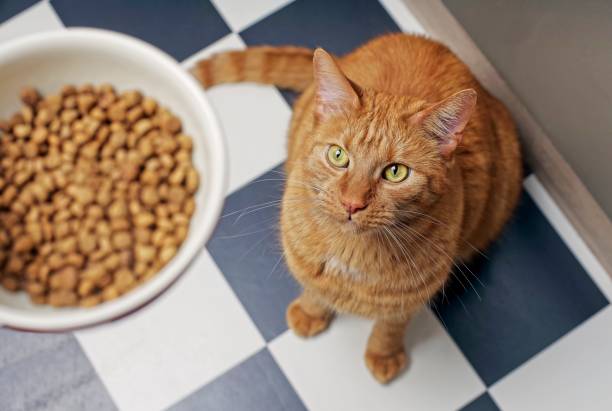In 24 cities

When To Switch From Kitten Food To Cat Food?
|
|
Time to read 4 min
Get product availability and delivery timelines based on your location.
Are you sure you want to delete this address?
Help us ensure a smooth delivery
Help us ensure a smooth delivery
SIZE GUIDE
|
|
Time to read 4 min
Your cat's nutritional needs shift as they slowly transition from a little ball of fur to an adult cat. However, switching your kitten's food too quickly may be disastrous for them. It can make the change more difficult. The timeline to shift to adult cat food will depend on your kitten's age, weight, and breed. This article describes why, how, and when to switch from kitten to cat food. Learn about the best cat food for kittens just starting with the transition.
The kitten food's formulation is slightly different from cat food.
Most kitten food online contains more proteins, fats, and calories than adult cat food to meet their growth requirements.
Healthy kitten food has more calcium to phosphorus ratio compared to cat food.
Most kitten food online considers these nutritional demands at the formulation stage. Supertails provides a variety of vet-recommended kitten food. It includes dry cat food (Me-O ocean fish and Farmina N&D chicken-flavoured dry cat food) and wet cat food (Royal Canin's gravy-type and Purina's jelly wet cat food). Therefore, a sudden food transition might be hard to adjust for your kitten's body. The key is not to be in a hurry and make it a gradual process.
Kitten food is rich in nutrients that help them mature into healthy adult cats. But once they become adults, their dietary needs change. They become less active than before. Hence, feeding them a high-calorie diet (specific to kitten food) will only make them obese. Moreover, adult cat food requires higher concentrations of vitamins and minerals to keep them disease-free. For all these reasons, switching from kitten to cat food is crucial when your kitten turns into an adult cat.
It is essential to know exactly when your cat is considered an adult to understand the correct time for this transition. For a standard breed, the average adult age is 12 months. For a large breed, it is 18-24 months.
As a general rule of thumb, kittens must eat kitten food till they are 90% of their adult body weight. Therefore, it is safe to start transitioning to adult cat food around your kitten's first birthday. At this age, your kitten stops needing the extra calories and nutrients in specially-formulated foods. For larger breeds, such as Persian cats and Maine Coons, you should wait till they are 18 months old. Please consult your vet before introducing your kitten to a new diet.
Pets develop gut microbes to digest their specific diets. When it changes suddenly, the microbes may not get enough time to adjust to the new food, leading to digestive issues. Therefore, knowing how to switch from kitten to cat food is crucial while introducing adult cat food to your kitten.
If you are a cat/kitten parent, you must have understood that cats are not big fans of change. Many cats are fussy eaters too. A gradual and systematic shift is advisable. It is very similar to the weaning process of human babies or introducing them to cow milk. Spread the transition process over ten days instead of expecting a one-day feat. Do not stop their old diet abruptly. Instead, slowly dilute it out by mixing it with the new diet.
Here is a rough timeline of how you and your kitten can achieve this milestone:
Days 1 and 2 - Begin with feeding them 75% of their old kitten food and 25% of the new adult cat food.
Days 3 and 4 - Feed a mixture of 50% kitten and 50% cat food.
Days 5-7 - You are almost there! Increase the concentration of adult food to 75% and decrease the kitten food to 25% in the mixture.
Sheba's gravy-rich wet cat food, Whiska's tuna-flavoured dry cat food, and Royal Canin's sterilised adult dry cat food are excellent options while transitioning your kitten to adult cat food.
Different cats react differently to changes in their diet. For some, the shift may be uncomplicated and quick. Whereas, for others (especially the delicate ones and picky eaters), it may be more time-consuming. Here are some suggestions to make the transition smooth:
Provide a noise-free and calm atmosphere to your cat during the transition process.
If you are giving dry cat food, try hydrating it a bit to make it more appealing. Alternatively, vets recommend a mix of dry and wet cat food in this phase.
Hand-feed your cat to give a better sense of comfort and security.
Offer the food on a flat dish because the cat's security sense gets heightened when their whiskers brush against the dish's sides.
Try to follow a structured feeding schedule.
The switch from kitten to cat food is a huge milestone. Every cat owner would want to get it right. Following the tips mentioned in this article, you can smoothly transition from kitten to cat food. Remember that, most importantly, your cat needs a lot of love, care, and patience to help them achieve this milestone. Please consult your vet for the ideal time to switch and the correct diet for your cat's particular breed.
Shop at Supertails for a wide range of wet and dry healthy kitten food online. You can also purchase deliciously flavoured adult and all-life-stage cat food to make this switching-over journey a pleasant experience for you and your cat.
Share this blog
2 item in cart
₹10,360

